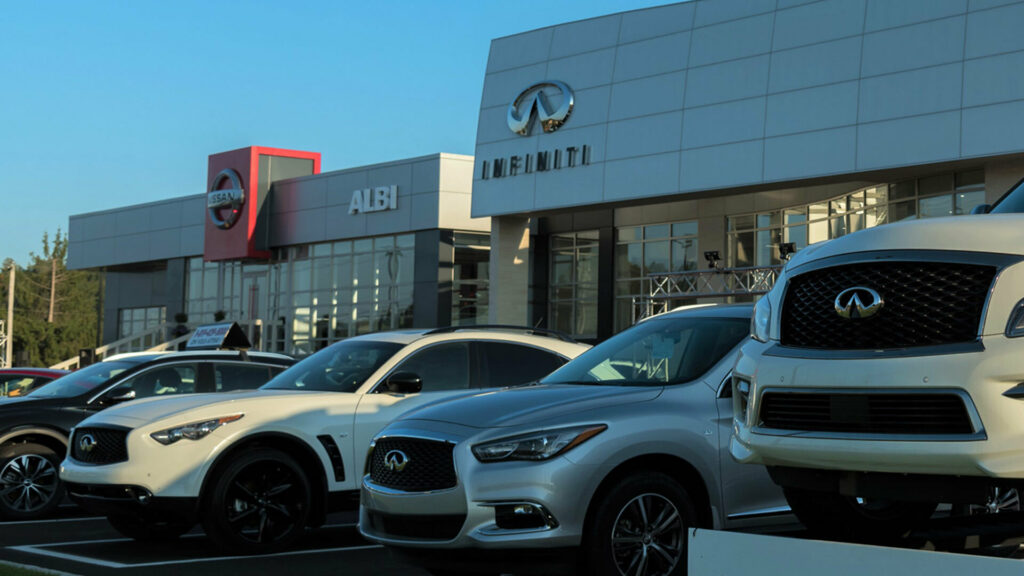- Nissan CEO Makoto Uchida’s drastic moves include layoffs and pay cuts, but more is needed.
- With new tariffs looming, the company’s U.S. sales and profits could face serious setbacks.
- Missed hybrid opportunities are forcing a shift in strategy, but it might already be too late.
From one day to the next, it seems that the plight Nissan is facing doesn’t want to go away. In October, the brand announced a series of sweeping changes, including 9,000 layoffs, reduced production, and potential delays for upcoming models. The CEO, Makoto Uchida even cut his own pay by 50 percent. However, he may lose it all if he fails to steer the company back from the brink.
That will be a huge task with several moving parts. Unnamed sources within Nissan reportedly claim the brand has just 12-14 months to survive. To make it, the automaker will need to trim costs, maintain sufficient production, and continue developing desirable products.
More: Things Are So Bad At Infiniti That Stores Can Now Be Paired With Nissan Dealerships
According to Reuters, Uchida is under direct pressure to turn this ship around. Evidently, the next few months will decide his fate. It’s unclear how the brand will proceed to find that success though. Reports suggest that the brand is looking for a new major financial backer. In addition, a brand like Honda, which is already partnered with Nissan, could end up being that life line.
Not everyone has a dour view of the situation. Activist shareholders are reportedly snapping up stakes in Nissan, betting on a potential turnaround in the market. However, before that optimism can be realized, Uchida and Nissan must navigate a new US presidential administration with goals vastly different from those of the outgoing one.

Donald Trump has signaled his intention to impose a hefty tariff on goods that come from Mexico and Canada which, could short-circuit Nissan’s plan to increase sales and profits in the USA next year. Obviously, Nissan isn’t the only brand dealing with issues right now, but of the larger automakers in the world, it might be in the weakest position.
Now, the brand is also allowing Infiniti stores to pair up with Nissan dealers. Will that be a step in the right direction? We’ll see, but it sounds more like a band-aid for struggling dealerships.
Nissan’s Hybrid Misstep: A Late Realization of What the US Wants
When it comes to hybrids, Nissan’s timing couldn’t have been worse. Uchida himself has admitted that the company missed the memo on North America’s demand for hybrids, opting instead to double down on EVs being one of the leaders in the segment with the Leaf. Now, as hybrids are soaring in popularity, Nissan is scrambling to make up for lost time. While it offered a hybrid Rogue in 2017, the model was discontinued by 2020 due to low interest, and the company never followed up.
According to two sources speaking to Reuters, Nissan’s protracted dismissal of hybrids was rooted in a single belief: the future was electric, and nothing else mattered. But the market had other ideas. High EV prices combined with a lack of charging infrastructure made hybrids the preferred choice for many American buyers, and Nissan found itself caught flat-footed.
“It’s an excuse, but up until this time last year, we weren’t able to foresee the rapid rise in demand for hybrids,” Uchida admitted at the earnings press conference in November.
More: Nissan Rethinks US Plans After Missing Hybrid Wave
Now that the reality has sunk in, Nissan is rushing to adjust its strategy. The company’s e-Power hybrid system, which has been available in Japan since 2016, is set to make its US debut by March 2026, Reuters reports. A plug-in hybrid version is also in the works for America. However, Nissan recently acknowledged that its ambitious electrification plans—30 new models by 2030—may face delays as it prioritizes cost-cutting measures to stay afloat. By then, it might be too little, too late.
Nissan’s problem isn’t simply falling behind, it’s failing to keep pace with a market that’s shifted beneath its feet. Whether it can turn things around or slip further into the abyss remains to be seen, but one thing’s clear: survival will require far more than just a lineup of freshened-up models, and time is running out.





